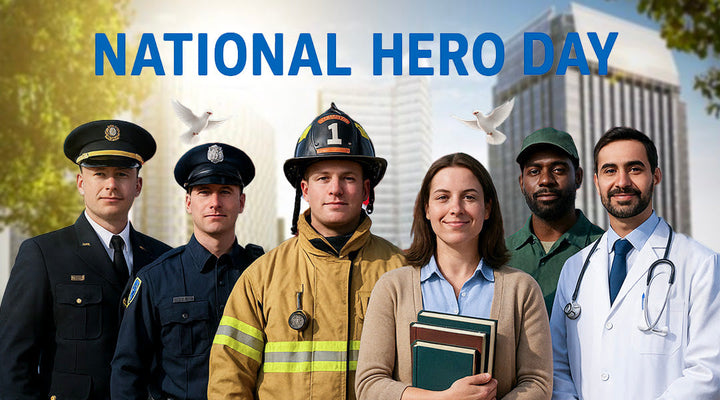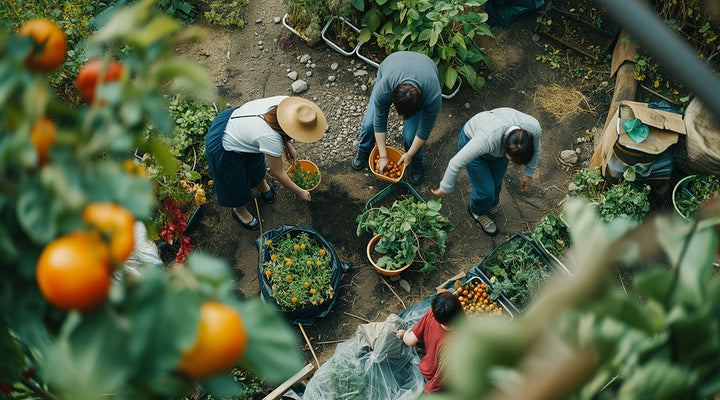
5 Ways To Show Kindness To Those Facing Homelessness In The Cold The Winter Months
Key Takeaways
The winter season presents added, dangerous, challenges to homeless populations throughout our country. To best show compassion in these situations, we must first be aware of the challenges homelessness brings to a person, then seek ways to help.
- A lack of shelter or limited shelter space, areas ill-prepared for cold temperatures, and winter weather (including a limited amount of daylight) puts homeless populations at risk.
- Exposure to typical winter temperatures can exacerbate existing health conditions and makes individuals susceptible to respiratory and other illnesses.
- Hypothermia, dangerously low body temperatures, and frostbite are common concerns amongst homeless populations, each of which can lead to permanent injuries, heart complications, and even death.
- Some ways to show kindness and offer help to those without shelter, especially throughout the winter months, include providing care packages, donating items to shelters, providing a warm meal or hot coffee, volunteering time or needed information to shelter as well as those in need.
As we approach the winter season, oftentimes our thoughts turn to holidays, gatherings with friends, and all the warmth (physical, mental, and emotional) this time of year brings.
However, for many this season signifies nothing shy of danger, bringing life-threatening burdens that topple the already-dire situations they face.
As of January 2024, nearly three quarters of a million people were estimated to be homeless within the US on a single night.
And, I can only (rightly) imagine these numbers have grown since this time as this number alone increased 18% from the prior year.
There are many factors which intensify the dangers of homelessness, most of which occur throughout the winter months.
And, as I think of these dangers and the hardships homeless populations face, especially in the winter season, I can’t help but think of something Mr. Rogers commonly shared in the face of tragedy:
Mr. Rogers often explained, when he was a boy, as he would see tragedies or the reporting of disasters on the news, he would become frightened by what he saw. In response, he recalled his mother calming him constructively by saying “look for the helpers, you will always find people who are helping.”
I believe the hardships people face in homelessness are nothing shy of tragedy.
And today, as we discuss the difficulties these people endure, especially in the brutally cold temperatures brought on by the winter season, our goal, aim, and hope is that we can all find ways to reach out in compassion and be a helper.
How Does the Winter Season Dangerously Impact The Homeless?

Homelessness in and of itself is a dangerous situation, but when temperatures become extreme, in both heat and cold, these dangers compound.
The winter season, in particular, is very hard on homeless populations as this type of weather presents life-threatening situations.
At the very least, the cold temperatures can exacerbate health concerns as well as make individuals susceptible to respiratory conditions and other illnesses.
But this only scratches the surface…
Limited Space
When temperatures drop, shelters often reach capacity very quickly, and many areas simply do not have adequate resources to help everyone in need.
Of course, this means that some face exposure to extreme temperatures.
To make matters worse, in extreme weather events, public spaces such as libraries, restrooms, etc. commonly close.
These areas are typically considered critical shelters for the homeless, and when closed, this lack of shelter becomes life-threatening for some.
Lack Of Access
In line with what we’ve just mentioned, these same extreme weather conditions can make it increasingly difficult for those without shelter to find a warm meal, leading to malnutrition and even a greater susceptibility to illness.
Location/Preparation

In areas where extremely cold temperatures are commonplace throughout the winter months, these locations typically have a greater number of shelters ready to help those in need.
However, as we all know, weather can be entirely unpredictable no matter your location.
So, for those regions which typically do not see extremely cold temperatures, an unexpectedly cold season can be very dangerous for homeless populations as these areas are commonly unprepared to provide shelter when needed.
In other words, it’s easy to think of areas which commonly do not see extremely cold temperatures in the winter months as being safe or having a lesser need. But, when it comes to aiding those without shelter, a lack of such preparations can mean the difference between life and death.
Health Risks
We all know the winter season is marked by less daylight, extremely cold temperatures, and other adverse weather conditions including snow and ice accumulations.
The thing is, these minimal daylight hours and bitter temperatures pose great danger to those without shelter.
For older individuals and those with health conditions, exposure to cold temperatures can make them more susceptible to illness and worsen nearly all health concerns.
A lack of hygiene is also a problem for those without access to shelter, and this can lead to a greater risk of infection.
Even those living in shelters face this problem as close quarters often become a breeding ground for illness.
And, as you can imagine, one of the most significant dangers facing homeless populations throughout the winter months is ‘injury’ due to exposure.
Dangerously low body temperatures, frostbite, and hypothermia are very real concerns for those without shelter during the winter season, each of which can contribute to heart complications (heart attacks), permanent injuries, and even death.
Stress/Mental Health

The element of heartache and loneliness commonly experienced due to homelessness is a real concern.
But on top of this, the stress of continually needing to find a warm place to shelter in extreme temperatures can also take its toll.
This struggle can be immediately physical, but it also leads to chronic or ongoing stress which negatively impacts physical, mental, and emotional health in a number of ways.
Each of these dangers of homelessness are issues many face within our own nation - within our own cities, towns, and neighborhoods.
So then, what can we do to bring aid to such situations?
In other words, how can you help?
How Can You Help?
If you’ll allow me, I’d like to begin this section by sharing something deeply personal…
My childhood wasn’t what many would call ideal. And the scars from those experiences, unfortunately, led my brother down a path of addiction, one where he sought relief from substance abuse.
He often fought against the vice grip of this disease, seeking rehabilitation, etc.
However, ultimately, he lost his battle with addiction in October of 2015.
Since his passing, my family learned there had been times when he was homeless.
My baby brother was homeless - those words echo through my heart and mind on a loop at times.
He had family members who loved him deeply. Yet, he was without shelter, food, or comfort during seasons of his life, seasons he hid from many.
My point?
Whether or not you can relate to this in any way, shape, or form, what I hope we’ll all see here is this - while the word “homeless” describes a situation, it does not define a person.
Those individuals facing homelessness…they are someone’s sons or daughters, mothers or fathers, sisters or brothers…and they just happen to find themselves in a place of need.
I fear we can easily become desensitized to seeing the growing number of people living “on the streets,” but I believe it is vitally important to remember this truth: You never know what another person is going through.
We do not know someone’s personal circumstances or struggles, and therefore there’s no room for judgment when it comes to the life of another.
In fact, when it comes to the crisis of homelessness in our nation, the only appropriate response is kindness or compassion.
So then, as Mr. Rogers has so plainly echoed, when it comes to this tragedy, let’s not only look for the helpers, let’s see how we can offer our hand to help.
1- Kindness Kits

I regret to say it took homelessness ‘hitting home’ for me to dig deeper into the needs people commonly face when they are without shelter.
But, as soon as I discovered this about my brother, I immediately scrambled to find something to do.
At this time, my thoughts were scattered, but my heart and a bit of questioning led me to compile a list of items I could package to hand out to those I came across with a similar need.
In other words, I prepared countless packages, bags, or kits of items I could keep in my car with the intent of giving to those I found as I exited the grocery store, someone asking for help at the side of the road, or someone I came across as I walked down a busy city street.
These kits included the following:
- Bottle of water
- Pair of warm socks
- Pair of warm gloves
- Hand warmers (“hot hands”)
- Travel sized toiletries (shampoo/conditioner, body wash, deodorant, toothbrush, toothpaste, towelettes)
- Packaged snacks (crackers, granola or protein bars, peanut butter cups with a plastic spoon, trail mix)
- Lip balm or salve for dry cracked lips/hands
- Tissues
- Feminine hygiene products
- Comb or small brush
- Handwritten note of encouragement
When preparing such items, the goal is to provide nourishment, hydration, hygiene, relief, and encouragement.
So, with this in mind:
- Avoid fragranced items as these can ruin snacks.
- Try to stick to soft food items that are easy on teeth and gums as some folks do not have access to dental care.
- Avoid items such as mouthwash and sanitizer as these can contain alcohol.
- Be sure to package items in a large gallon bag that seals to keep the items protected from the elements.
2- Shelter Donations

Shelters heavily rely on donations to bring aid to those in need.
And, when it comes to the winter months, some of the most commonly needed items include:
- Clean socks
- Undergarments
- Thermal socks/undergarments
- Warm winter hats
- Knit gloves
- Warm winter coats
- Blankets
- Sleeping bags
- Tents
- Sweaters, sweatshirts, and layering essentials
As the need is great, consider donating these items in bulk when you can. And consider donating a variety of sizes (children through adults).
3- Warm Food, Hot Coffee

Did you know we can actually experience greater levels of hunger when we’re cold?
Experts explain that our bodies, in an effort to bring warmth and protect our organs, signal a greater need for warm foods and beverages when we’re cold.
You can provide help to those experiencing homelessness, especially in the cold winter months, by offering a meal, or sharing a cup of hot coffee (cocoa, tea, etc.) with those in need.
My daughter works in food service part-time, and she routinely tells me of homeless people who come inside to warm up and get a cup of coffee in the winter months.
Consider helping by offering to pay for their meal or cup of coffee.
Or, when you see someone outdoors, in need, bring them a warm cup and a smile.
You could also plan to hand out gift cards with enough funds for a cup of joe.
I’ve also seen groups bring to-go cups and “boxes” of coffee and cocoa (those packages which house multiple servings of hot coffee, etc.) to downtown areas, ready and willing to pass out cups to many individuals in one setting.
Just brainstorming here, but you could gather a group of friends/co-workers, each with a large thermos of coffee, tea, or cocoa, and do the same to provide needed nourishment, warmth, and encouragement to folks this winter.
Also, consider bringing a warm meal to someone (or many someones) you see without shelter this winter.
And, I don’t know about you, but I live near Lexington, KY, and here there are countless…seriously, so many…restaurants which allow you to pay for meals for those in need.
The next time you’re out, plan to visit places around your town/city, and inquire about paying for meals ahead, specifically setting aside funds for meals to be covered for homeless people, so these folks can come inside, warm up, and enjoy a hot breakfast, lunch, or dinner.
4- Other Donations

For those shelters which serve hot meals, consider donating food items when applicable.
Hunger is a growing problem facing families in our nation, and this includes those without shelter.
So, aside from donating or handing out a hot meal, plan to donate items to shelters such as:
- Canned goods such as vegetables, soups, stews, chilis
- Pasta, pasta sauce
- Rice
- Beans
- Peanut butter
- Granola bars
- Nuts and trail mix
- Instant oatmeal packets, breakfast cereals
- Easy to open packaged items such as tuna/salmon/chicken, fruit cups, applesauce, crackers
- Fresh produce such as bananas, apples, and oranges (easily transportable, don’t require refrigeration)
- Bottled water
- Juices
- Condiments and specialty items for specified needs such as low-sodium or sugar-free options
5- Volunteering Time And Info

Of course, oftentimes helping hands are needed just as much as donated items. So, also consider volunteering your time to serve others within shelters, etc.
As the winter season necessitates a greater need for both shelter and warm food, these places often have a dire need for volunteers this time of year.
We commonly think this is limited to serving meals, but shelters need volunteers to aid in meal preparation and clean up, room preparation, and donation management as well.
Then, for some folks, finding resources (like shelters) can be a challenge, especially amidst the stress of homelessness in the winter months.
So, plan to learn of shelters in your area, and be ready to pass on this information to those you encounter who might have this need.
Likewise, when you find a restaurant that allows for “pay ahead” meals, don’t simply donate, but be sure to let folks you encounter know about these resources.
Yes, they may already know of these opportunities, but many do not. So even better, write this information down and pass it out to those you encounter who are in need of such aid.


FAQ
1- I’m not able to do much, so how can I make a positive impact?
First, every effort counts!
But, we all know that we can accomplish great things together.
So, share these ideas and your heart to show kindness to others with your friends, co-workers, and neighbors. Then, come together to make kindness kits, volunteer at a shelter, gather resources for donation, etc.
2- Can I donate monetarily to shelters if I don’t have time to purchase items?
Yes, definitely.
Many shelters are in need of monetary donations to continue their efforts in serving homeless individuals within any given community.
3- Are there other specifics to consider when donating to shelters?
Always donate new or gently used items when it comes to clothing, blankets, etc.
And, never donate expired foods.
When it comes to specific needs, however, it’s always wise to contact your local shelter(s) to inquire about the specific needs they may have as these change from time to time.
Check out Lifeboost Coffee Optimist Light Roast.

Becky is a mother, educator, and content writer for Lifeboost Coffee. She has had three years’ experience as a writer, and in that time she has enjoyed creatively composing articles and ebooks covering the topics of coffee, health and fitness, education, recipes, and relationships.
- https://endhomelessness.org/state-of-homelessness/
- https://www.ukim.org/media-centre/latest-news-&-updates/why-winter-is-especially-dangerous-for-the-homeless/
- https://pathwaystohousingpa.org/news/practical-ways-help-those-experiencing-homelessness-winter#
- https://atlantamission.org/what-happens-to-those-facing-homelessness-in-the-cold/#
- https://atlantamission.org/5-ways-you-can-help-those-experiencing-homelessness-this-fall-and-winter/
- https://portlandrescuemission.org/news/about-homelessness/how-to-pack-a-care-kit-to-help-someone-homeless/
- https://heartsforthehomeless.org/dangers-of-improper-hygiene-during-the-winter-months-for-the-homeless/#
- https://moveforhunger.org/top-items-for-food-banks
- https://www.good-deeds-day.org/warming-hearts-this-winter-how-to-assist-vulnerable-communities/#
- https://bagsinbulk.com/blogs/resources/10-essential-items-you-can-donate-to-homeless-shelters-this-winter
- References for the article to confirm data and information.










